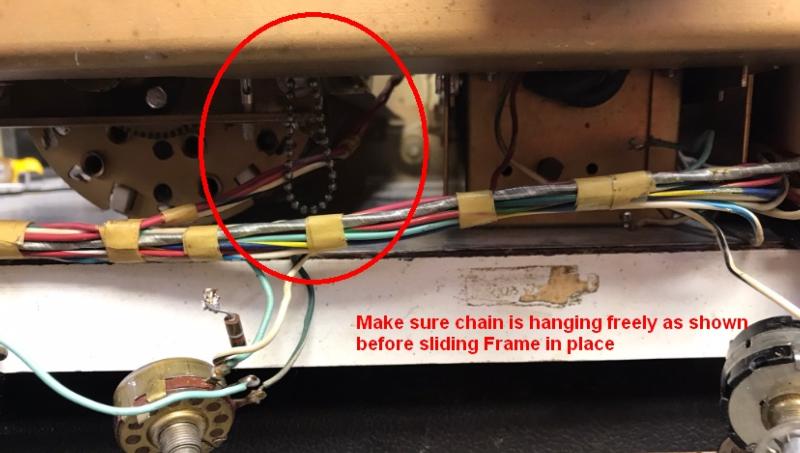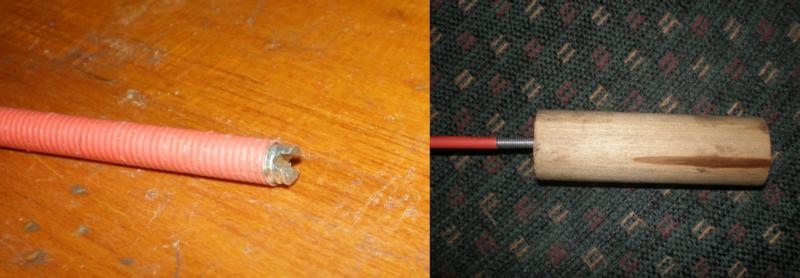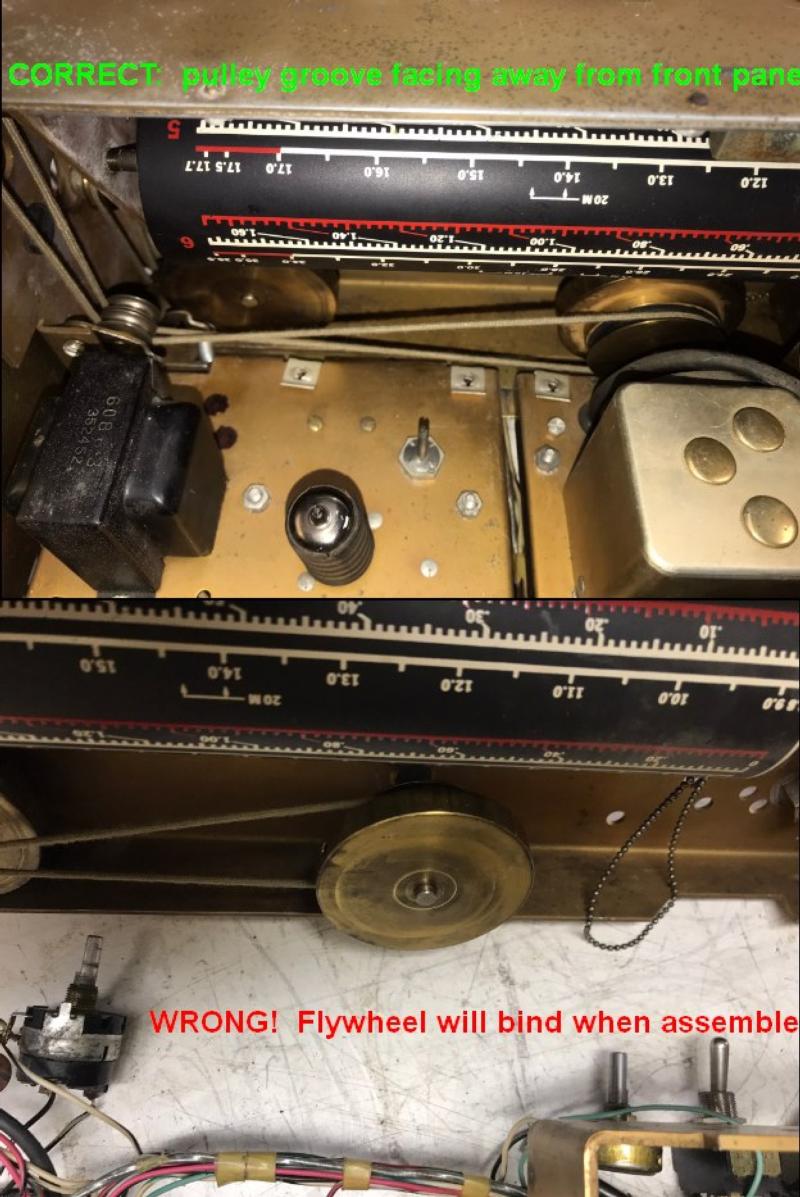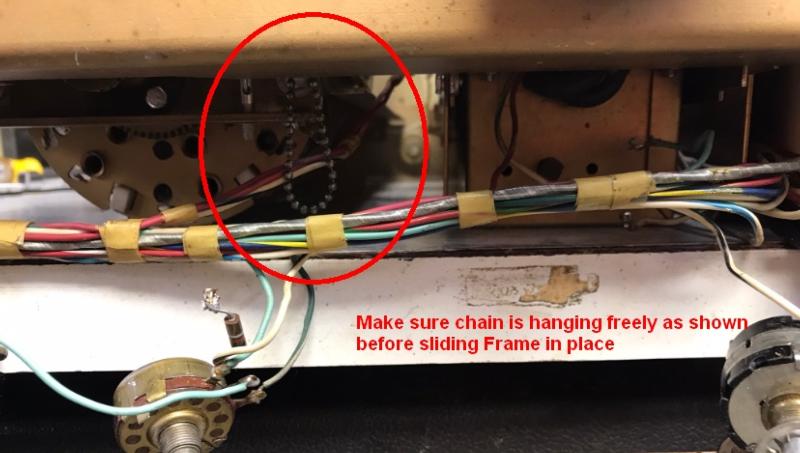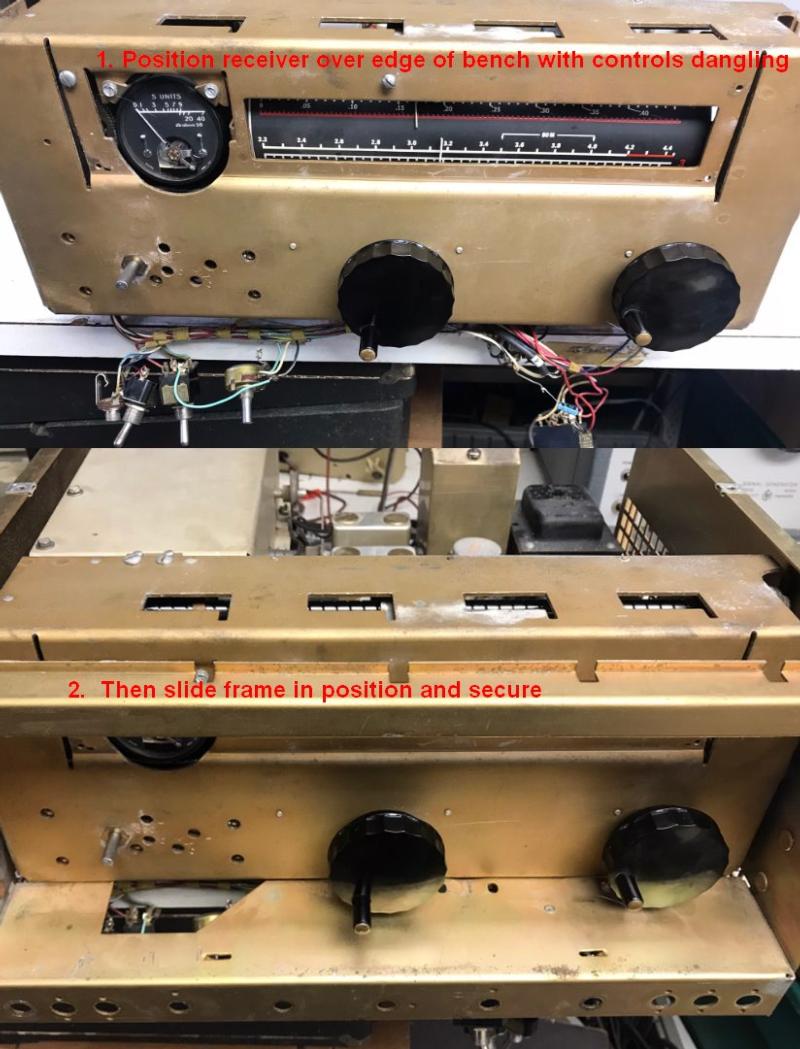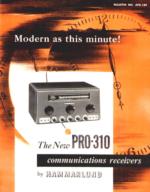
Posted By: Robert Nickels (ranickels) Posted: 01/14/2022 Vintage Ham Radio 01/14/2022 |
Hammarlund PRO-310 Restoration"mechanically, it's a nightmare..." |
|
Having grown tired of seeing this rare and somewhat incredible receiver sitting on the shelf, unusable due to slipping dial belts, I bit the bullet and tore it apart to begin restoration. The quote above comes from Tom Rousseau K7PJT's article in Electric Radio on the PRO-310 and boy, is he spot on! Since I will be depending heavily on what he and others have written about this receiver, this will be more of a collection of resources than anything original. Most importantly, the write-up which was done by Grant Youngman NQ5T is avaialble for downloading in the "Attachements" section at the bottom of this page. Grant's interests have moved on and this document has become somewhat difficult to find since it was never published but was provided to those in need in pdf form. Thanks to Grant for making this information available and for coming up with a source of replacement dial belts. The last known source for those belts was Mark Olson Nationwide Radio Contact Mark for more information. Bob Sullivan WØYVA's restoration page and photos are HERE Here are a couple of tips from my own experience in putting the PRO-310 back together -- several times... #1. Maybe those who pay more careful attention to the photos referenced would not make this mistake, but I installed the middle flywheel backwards. It worked fine on the bench and I was able to assemble the modules into the frame and was actually connecting the speaker for a check out before I realized that the middle knob was frozen solid. There is an interference fit between the flywheel and middle chassis when installed wrong, and the only solution is to completely disassemble the receiver and turn the flywheel over. The two flywheels face OPPOSITE directions. #2 The chain used to drive the band indicator drum is easy to install BUT also can be caught in the wrong place, requiring disassembly. To avoid this make sure the chain is looped over the drum sprocket and hanging down freely as shown. #3 The "exoskeleton" or three-sided frame that holds all the modules together can be difficult to remove and install because when it is not in place the modules can all move in various directions. Several ground and signal wire soldered connections must be removed to allow the frame to come off as well as all controls and shafts, creating an unwieldly mess! But I found a method that makes it very easy and only requires two hands! First, position the receiver on a flat surface with the controls dangling by their interconnecting wires over the edge. Then you can slide the frame on the benchtop and it's easy to align the modules to fit. When the frame is in the position in the bottom photo, it will be necessary to pull up on the tuning assembly so it can clear and as the frame is engaged the bandswitch shaft and slotted "hook" must be aligned as well as the tuning gear during the final fraction of an inch. But having everything supported firmly on the bench makes it MUCH easier and everything will just slide into place. Double check to make sure the chain is hanging down and not hung up. Then the two screws can be installed that hold the tuning unit to the RF front-end chassis. Then three screws in each side on back, three on one side, and the two long screws with tapered pin ends that secure the tuning unit in it's grommets. The four longer screws fasten the smaller chassis to the frame. There are a few others but at this point everything is fastened securely to the frame and the receiver can safely be turned over to engage the chain drive (depress the tensioning arm to get slack). An awl is handy to have to quickly line up screw holes. Disassembly is just the reverse but you'll have to remove the small chassis screws before turning the receiver right-side up on the bench to avoid having to try to flip it over without frame support. Mistake #N: when reassembling I managed to get the bead chain flipped on the double pulley which resulted in the drum rotating backward compared with the turret. Hint: see the marked up pic from Grant's document to show the proper way the chain should be installed. ALIGNMENT TOOL: Truth is, it took less time to make than I spend fussing about why I had to make a special alignment tool! The photo below will perhaps be a bit easier to understand than the small drawing in the manual. I found a leftover piece of #8 threaded rod that measures .164" OD and cut a piece about 12" long. A sleeve of heat-shrink tubing provided the necessary electrical insulation and brought the diameter up to about .178" which is a perfect fit (the manual says no more than 3/16" dia). The slot in the end was cut with my Dremel tool using an abrasive wheel that happened to be .040" thick but a hacksaw kerf would probably be about right. A scrap piece of wood dowel was drilled and screwed on as a handle. I have to say, this worked really slick. The tool aligned perfectly with the adjustable trimmers and coils inside the turret and alignment went like a breeze thanks to high quality components. The mixer alignment was off quite a bit on a couple of bands and made a nice improvement. The RF tracking seems pretty non critical and while the oscillator is just the opposite, it's nice to know the receiver has been tweaked up as it should be. ALTERNATIVE BELT MATERIAL/SOURCE Here's some great news for PRO-310 restorers! Bob Mattson W2AMI who recently dug into his PRO-310 found a source for belts that are readily available and he reports they work fine:
This is good because the original quantity of woven fabric belts was limited and ultimately would be exhausted, if they haven't been already and the fact that these belts are much less expensive is a plus. Click the linke for SUPPLIER INFORMATION
|
|
Related Images
Click on the image title or on the image itself to open the full-sized image in a separate window.
Related File Attachments
| Description | Comment |
|---|
Latest Articles
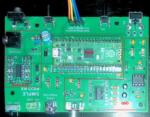
Technical
Posted: 01/29/2025
Comments: 0 |
Pico Rx performance - Excellent performance on 630m WSPR
The Simple Pico Rx is my minimalist implementation of Jonathan Dawson's "Pico Rx" at 101things: https://github.com/dawsonjon/PicoRX In this basic form the receiver consists of a Quadrature Sampling Detector (QSD aka Tayloe) and the Pico2 MCU which handles all DSP functions. There are NO front-end filters, the only bandwidth limitation comes from the tracking filter... READ MORE |
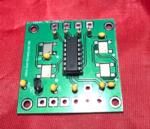
Crystal Replacement
Posted: 08/226/2024
Comments: 0 |
Making SMT "no lead" parts easier to use
SMT is the future - but how can we actually use parts without leads? ... READ MORE |
|
Crystal Replacement
Posted: 02/38/2024
Comments: 0 |
How good can a crummy receiver be?
Hundreds of different simple SDR receivers have been designed around Dan Tayloe's Quadrature Sampling Detector or QSD. Mine add nothing to the state of the art, and in fact subtract things, as I like minimalist solutions and the QSD is right in that sweet spot. Following the evolution of Tayloe's design I delete the resistors in series with the sample lines for inst... READ MORE |

Technical
Posted: 02/37/2024
Comments: 0 |
What's in a number (3253)?
The FST3253 dual four-to-one mux/demux IC has long been used as a "Tayloe Detector" or QSD (and QSE) in low-cost SDRs. They provide incredible performance for such a simple circuit, converting RF to baseband IQ with low loss and the ultimate in simplicity. Unfortunately the original FST3253 part has become obsolete and while substitutes are available, this is where the... READ MORE |

Vintage Ham Radio
Posted: 02/32/2024
Comments: 0 |
The Stancor 10P Transmitter
There weren't really many commercial transmitters in the 1930s as most hams built their own. But many of the ones that were offered came from the transformer companies who had two chances to profit. First, from those who would buy the kit, and two, from those would would see it in the (free) booklets the companies provided to their distributors who would then sell the iron to ham... READ MORE |

Vintage Ham Radio
Posted: 12/355/2023
Comments: 0 |
The Care and Feeding of the EF Johnson Courier amplifier
The EF Johnson "Courier" is a grid-driven amplifier using two 811A tubes. Switching is provided for operating in either class C for CW or as a class B linear amplifier for AM or SSB. Rated power is 500 watts input for CW, 500 watts PEP input for SSB, and 200 watts input for double-sideband AM with carrier. Since all amateur power levels were meas... READ MORE |

Historic
Posted: 11/329/2023
Comments: 0 |
TV Duplexer
Some things are interesting, even if totally useless nowadays. Such is the case with the Philco 426-3034 Crossover Kit for UHF TV. What the heck is that? Well, back in the late 50s, UHF television stations operating on channels 14-83 started to appear in many areas of the US where viewers had a VHF-only TV antenna, and in many cases an externa UHF converter was... READ MORE |

Crystal Replacement
Posted: 11/327/2023
Comments: 0 |
Replacing failed crystals
For decades, quartz crystals were used everywhere a stable frequency source was needed, even in some applications that depended on overtone (harmonic) behavior into the VHF range. These crystals were less stable and more dependent on circuit parameters that fundamental types and thus more problematic. Such was the case with the 94 MHz crystal in the 2 meter converter ... READ MORE |

Historic
Posted: 11/315/2023
Comments: 0 |
My Own Ham Radio Story by W9RAN
Everyone has a story of how they got involved in ham radio - this is mine. It started much earlier, including receiving a Knight Kit Span Master shortwave radio for Christmas in about 1963, at age 12. I'll never forget the night my dad and I finished building it and I wanted to try it out. It came with a 50 ft. antenna which was still coiled up - but ... READ MORE |

Technical
Posted: 09/267/2023
Comments: 0 |
Hot to simulate vacuum tubes in LTSpice
LTSice is a powerful simulation tool that is provided free by Linear Technology Corp. It comes with a complete library of passive and common analog solid-state components but if you want to use it to simulate vacuum tubes, it doesen't work as-is. Even though triode and pentode symbols can be found in the "Misc" folder, they are just schematic symbols and... READ MORE |
